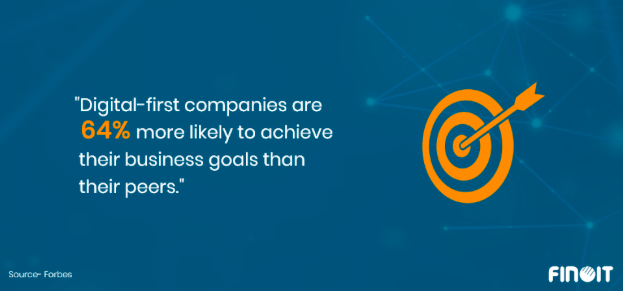From Paper to Digital: Making the Transition to an HVAC Service App

"The HVAC sector companies have been witnessing remarkable improvements in their productivity and efficiency. In fact, companies using digital tools report an average increase in productivity of 26%. With the field service industry projected to grow to $6.1 billion by 2026, it's more important than ever for HVAC businesses to embrace digitalization and stay ahead of the curve."
But one of the biggest challenges faced by HVAC businesses is the need for accurate and up-to-date information. With so many different types of systems, equipment, and components, it's easy to get overwhelmed by the sheer amount of data that needs to be managed.
This can lead to mistakes, delays, and even safety issues, all of which can have a significant impact on the bottom line.
But there is hope. By adopting a digital solution, businesses can streamline operations, reduce errors, and improve customer satisfaction.
In fact, a Forbes article suggests that companies that prioritize digital technologies are 64% more likely to successfully achieve their business objectives than those that do not prioritize digital transformation.

So if you're an HVAC business looking to stay ahead of the curve, it's time to make the switch to a digital solution. But where do you start? What are the best practices for transitioning to a new system? And how can you ensure a smooth and successful implementation? So let's dive in to explore the answers to these questions.
Embracing Digitalization: Strategies for Businesses Transitioning to an HVAC Service App
Companies need to stay ahead of the competition and adopt technology that can help them streamline operations, improve efficiency, and reduce costs. One such technology is Field service CRM software that allows businesses to manage their HVAC services seamlessly. Transitioning from traditional paper-based systems to digital solutions can be challenging, but the benefits are well worth the effort. In this article, we will discuss five strategies for businesses transitioning from paper to an HVAC management app.
Strategy 1: Set Clear Goals and Objectives
One of the biggest challenges businesses face when transitioning to an HVAC service app is setting clear goals and objectives.
As rightly said by Yogesh Choudhary, CEO of Fieldcircle, "Without clear goals and objectives, a business is like a ship sailing without a destination. It may cover a lot of distance, but it won't reach its desired port."
That means without a clear plan in place, businesses can quickly become overwhelmed by the sheer amount of data that needs to be entered into the app.
According to a survey by Impact Economist, “The poor implementation of strategic goals results in the failure of around 90% of companies to achieve them."
By setting clear goals and objectives, businesses can improve their workflow and ensure their transition to an HVAC service app is successful.
Strategy 2: Choose the Right HVAC Service App
In a survey conducted by Salesforce, it was found that 46% of small and midsize business owners and leaders consider automation capabilities to be of great importance when evaluating new technology.
By choosing the right HVAC service app, businesses can automate and streamline their administrative tasks, saving time and money in the process.
There are dozens of HVAC service apps available, each with its own unique set of features and capabilities. To choose the right app for your business, you need to consider your specific needs and requirements.
For example, if you are a small HVAC business, you might be better off with a simple app that is easy to use and requires minimal setup. On the other hand, if you are a large HVAC business with multiple employees, you might need a more complex app that can handle a high volume of data and provide advanced reporting features.
Strategy 3: Train Employees Properly
Proper training is essential to ensure that employees understand how to use the app and can make the transition smoothly. According to a survey by WeForum, "The utilization of remote assistance technology has resulted in a better on-the-job training experience, leading to a 41% reduction in overall training time for new technicians."

Transitioning to an HVAC service app requires proper training for all employees. This includes not only the technicians who will be using the app in the field but also the office staff who will be responsible for entering data and managing customer information.
To ensure that your employees are properly trained, you should consider providing online and in-person training sessions.
Strategy 4: Use Data Analytics to Improve Operations
One of the key benefits of using an HVAC service app is the ability to collect and analyze data. By tracking customer information, service history, and other metrics, businesses can gain valuable insights into their operations and make data-driven decisions.
As per a study carried out by McKinsey & Company, organizations that utilize data and analytics to steer their decision-making process are 5% more productive and 6% more profitable in comparison to their counterparts.
This highlights the tangible benefits that businesses can achieve by leveraging data analytics to optimize their operations and drive growth.
To take advantage of data analytics, businesses should choose an HVAC service app that provides advanced reporting and analytics features. This might include real-time data dashboards, custom reports, and predictive analytics tools.
Strategy 5: Provide Excellent Customer Service
According to a survey by Microsoft Dynamics 365, "Customer service plays a critical role in brand loyalty, as stated by 95% of consumers. Furthermore, 60% of consumers have abandoned a brand and switched to a competitor due to inadequate customer service.”

Thus, businesses that are transitioning to an HVAC service app must not neglect the importance of providing excellent customer service. While the app can streamline many aspects of customer interactions, it is important to remember that customers still want to feel valued and heard.
By providing excellent customer service, businesses can build a loyal customer base and increase their revenue.
Conclusion
Adopting an excellent HVAC service app is a smart move for any HVAC business seeking to streamline its operations and improve their customer experience. Making the transition from paper to digital may seem daunting, but with the right strategies, it can be a seamless process that pays off in the long run.
By leveraging the features of an HVAC service app, technicians can work more efficiently, access customer data and job history, and stay connected with their team.
This can lead to improved customer satisfaction, increased productivity, and a competitive advantage in the market. With the right approach, HVAC businesses can successfully make the transition to an excellent HVAC service app and reap the benefits.
